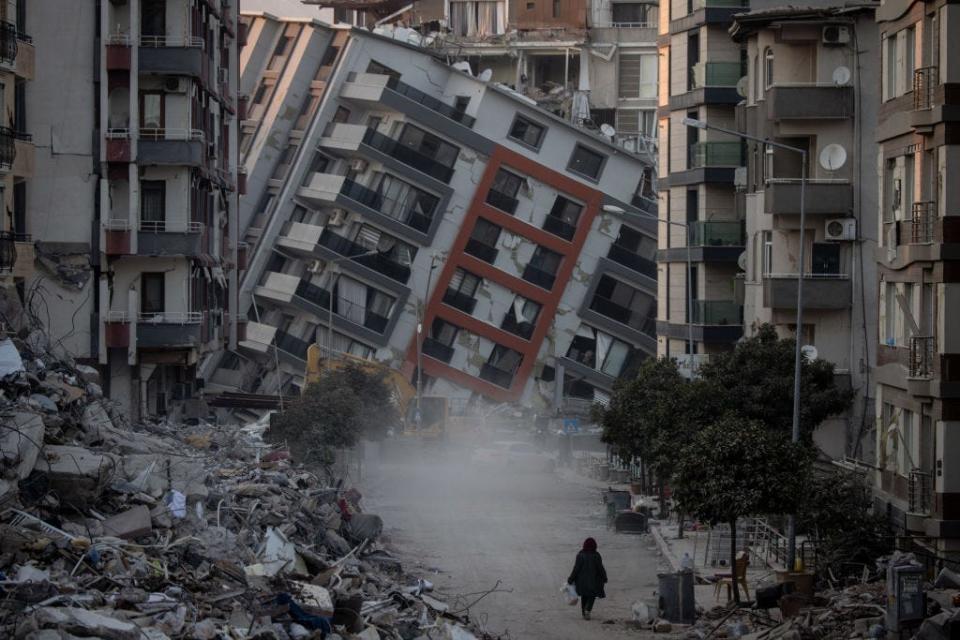In case you missed it, a meteotsunami just hit the shore near Holland, Michigan.
That’s the Lake Michigan shore. Directly across from Racine.
And yes, we said tsunami. Well, tsunami-like.
A progressive series of major waves quickly raised lake levels by roughly two feet, flooding the beach, according to a video The Weather Channel picked up from the City of Holland.
So, what is a meteotsunami? How often do they happen in the Great Lakes? And are they dangerous?
Here’s what to know.
What is a meteotsunami?
Meteotsunamis are series of large waves caused by storms that are moving fast, according to the National Oceanic and Atmospheric Administration.
These storms are typically moving faster than 35 miles per hour, causing rapid changes in atmospheric pressure, said Nate Falkinham, a meteorologist at the National Weather Service in the Milwaukee office.
The wave event that happened earlier this week near Holland was caused by the severe storms that hit southeastern Wisconsin late Monday into early Tuesday morning.
These storm-generated wave events occur all over the world, like the Gulf of Mexico, Atlantic Coast and Mediterranean and Adriatic Seas.
They do happen in the Great Lakes, typically between March and July, Falkinham said.
How do they differ from tsunamis?
A tsunami is a series of giant waves created by a large volume of water that has been displaced somewhere else, typically triggered an earthquake or underwater volcanic eruption.
Meteotsunamis are caused by air pressure disturbances that occur after fast-moving weather systems.
While tsunamis often make national and international news because the waves travel far distances, meteotsunamis are regional occurrences. Tsunamis are also much larger and catastrophic.
More: How does Lake Michigan affect the weather in Milwaukee?
What’s the difference between a seiche and meteotsunami?
These wave events are often confused with seiches, which also occur in the Great Lakes. A seiche is a standing wave that moves back and forth in a partially or fully enclosed body of water, according to NOAA. It’s similar to water sloshing back and forth in bathtub, but in the Great Lakes it happens on a large scale.
A seiche is largely driven by wind, while a meteotsunami is triggered by atmospheric pressure. Seiches also happen over longer periods of time, like more than three hours. Meteotsunamis last anywhere from two minutes to two hours.
Both events can happen at the same time.
How often do they occur in the Great Lakes?
About 100 meteotsunamis occur throughout the Great Lakes each year. Lakes Michigan and Erie are known hotspots for these wave events.
Major meteotsunamis are uncommon, but they do happen, Falkinham said. The last major one was in April 2018 after a 71 mile per hour storm pushed an 8-foot wave into Ludington, Michigan, damaging docks and submerging breakwalls.
Do these waves happen in southeast Wisconsin, Milwaukee?
It’s possible that some smaller meteotsunamis have occurred in southeastern Wisconsin, Falkinham said, but none were large enough tho have been documented.
Because the jet stream largely moves from west to east, these wave events typically happen on the eastern side of Lake Michigan.
According to Falkinham, the closest one occurred in Chicago in 1954. A quick-moving storm created a 10 foot wave that swept away many fisherman off a pier, killing seven.
More: Surfers acutely aware of environmental challenges facing Lake Michigan
Are meteotsunamis in the Great Lakes dangerous?
Most meteotunamis in the Great Lakes are too small to notice. But large ones can bring dangerous waves, flooding and currents that can injure beachgoers and damage shorelines.
Along with the meteotsunami that occurred in Chicago in 1954, there have been a number of dangerous wave events in the past hundred years. In 1929, 10 people died when a 20 foot wave retreated near Grand Haven, Michigan. In 1998, a Lake Michigan meteotsunami capsized a tugboat in the White Lake, Michigan harbor. Seven people drowned near Sawyer, Michigan, after a moderate meteotsunami.
Sudden water drawdown due to these events can also cause cooling water intakes at nuclear power plants to dry, creating safety issues.
While these events can be dangerous and even deadly, a reliable warning system across the Great Lakes has yet to be developed.
In general, Falkinham said it’s best to avoid the shores when thunderstorms are happening. And in the Milwaukee area, the National Weather Service will release special marine warnings and hazards on their X (formerly Twitter) account in the case of large waves and potential flooding.
More: More than 3 times as many shipwrecks were discovered in Lake Michigan last year as ever before. Why?
Caitlin Looby is a Report for America corps member who writes about the environment and the Great Lakes. Reach her at clooby@gannett.com or follow her on X @caitlooby.
Please consider supporting journalism that informs our democracy with a tax-deductible gift to this reporting effort at jsonline.com/RFA or by check made out to The GroundTruth Project with subject line Report for America Milwaukee Journal Sentinel Campaign. Address: The GroundTruth Project, Lockbox Services, 9450 SW Gemini Dr, PMB 46837, Beaverton, Oregon 97008-7105.
This article originally appeared on Milwaukee Journal Sentinel: A tsunami-like event hit Lake Michigan this week. Here’s what to know.
Signup bonus from




